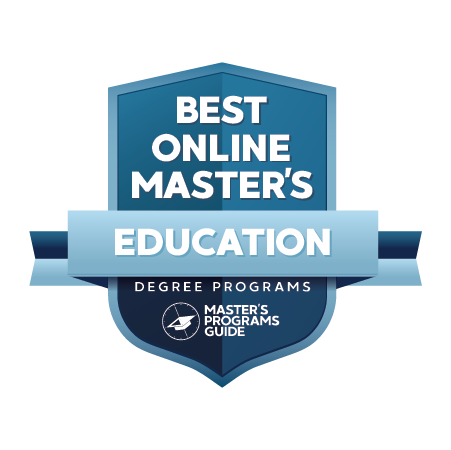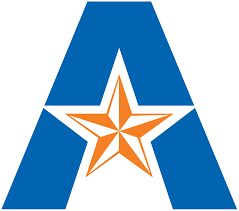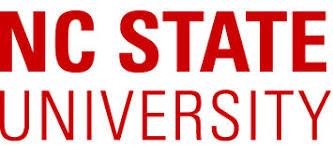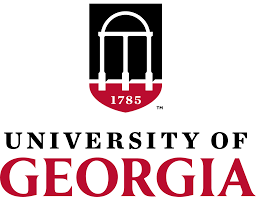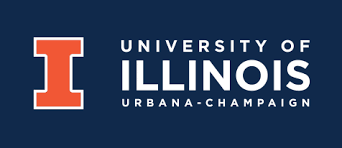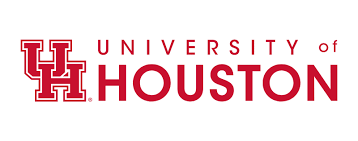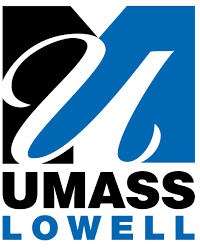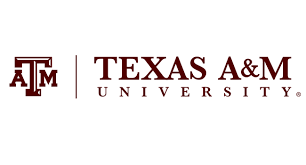Ready to find your ideal master's program?
www.mastersprogramsguide.com is an advertising-supported site. Featured or trusted partner programs and all school search, finder, or match results are for schools that compensate us. This compensation does not influence our school rankings, resource guides, or other editorially-independent information published on this site.
Teaching is a lifelong passion for many. The profession is unlike any other in the world.
It is true that you only need a bachelor’s to become a teacher in many places. However, earning a Master of Education degree (M.Ed.) is smart.
It is a great way to improve your own teaching ability. Plus, you’ll increase your annual earnings. That’s regardless of your grade level position or your school district’s budget.
Plus, in many states, you’ll have to get a master’s within a few years of starting your job.
Let’s take a closer look at all the reasons why you should pursue an affordable online master of education!
See Also: Best Online Master’s in English
What is a Master of Education Degree?
An M.Ed. is considered an extension of a traditional Bachelor of Education degree. There are a few different subtypes of M.Ed.. They all focus on teaching from an organizational or development perspective.
These programs provide teachers with the tools they need to develop their own curricula. They will be able to understand lesson-making from the ground up. This includes education about developmental learning and educational theory.
Some degrees prioritize students’ specialization in a chosen subject field.
For instance, teachers who primarily teach liberal arts or history can earn an M.Ed. with these concentrations. This will help them become even better at teaching those subjects.
On the other hand, current teachers can earn an M.Ed. and cross-specialize in several subjects. This is to make themselves more attractive to other schools and increase their salary.
Earning an M.Ed. is thought of as a required step for career educators. Most teachers will opt to earn an M.Ed. That might be for personal, professional, or financial reasons.
Holding an M.Ed. also opens other doors for career educators. For instance, you might transition into an administrative role. Schools require more than just teachers. They need principals, department heads, and curriculum developers. They all feed into the overall school system.
Even those outside the teaching profession can enter an M.Ed. program. They can transition to become a teacher. Often, they will need to obtain a teaching certificate as well.
An M.Ed. is an excellent choice for anyone interested in spending time in the public or private school systems.
Many of the best programs can be completed online. This approach is perfect for current teachers who want to further their education while still working. It’s also great for students who want to move into a master’s program right after their bachelor’s education.
What will students pursuing affordable online master of education degrees learn? In your courses, you’ll cover some of the following classes over the course of two to three years:
- Instructional Leadership
- Educational Research Methods
- Classroom Management for Secondary Teachers (or Elementary Teachers)
- School/Community Relations and Community Engagement
- Behavior Management
- Individual Student Education
- Educating Students With Exceptional Needs
- Differentiating Instruction
- Teaching English to Speakers of Other Languages
- Social Justice and Public Health
- Student Services and Mental Health Counseling
- Reading Literacy
- Educational Technology
- Educational Leadership
- School Leadership
- Educational Psychology
- Curriculum Design
Of course, you will also be able to complete courses beyond these foundational courses. Each program requires students to choose a focus. For instance, special education teachers will take more classes in SPED. Students interested in physical education will take classes to hone their teaching expertise in that area.
In most cases, you will complete a culminating experience as well.
See Also: Are Online Master’s Respected?
COMMON APPLICATION AND ADMISSION QUESTIONS
Getting into any master’s program is difficult. An M.Ed. program is no exception. Common admission requirements are detailed below.
All master’s programs have high GPA requirements. They ask for a certain score on the GRE. This can vary from school to school. But most master’s programs look for applicants with a GPA of 3.0 or above. That’s regardless of whether or not they’ve yet completed a bachelor’s degree.
Almost all master’s programs have applicants complete a bachelor’s degree before applying. Certain master’s programs do provide fast-track pathways. This lets students begin their master’s work while still completing their bachelor’s degree.
The GRE, or Graduate Record Examination, is a multiple-choice test. It is taken on a computer. It covers several core subjects ranging from English to mathematics.
Applicants often need to score above a particular threshold. Just passing the examination is not enough. GRE scores that are required vary depending on the program.
There are four main types of M.Ed. to earn. It depends on student preferences or career goals. Options include:
- Master of Science in Education (MS Ed.)
- Master of Arts in Education (MA Ed.)
- Master’s in Teaching (MIT)
- Master of Arts in Teaching (MAT)
The first two types are for teachers who specialize in a particular subject. They’re also popular for educators who want to move into administrative positions. They might head a particular academic department.
MIT degrees are for students who want to become a teacher. They may need to meet certain teacher certification requirements. These programs include field experiences or real-world practice in a classroom.
MAT degrees are for current teachers wishing to hone their educational expertise. They are also ideal for those who have a bachelor’s degree and want to become a teacher.
Other typical master’s program requirements include:
- personal statement
- letters of recommendation (often, three references)
- other examples of one’s teaching ability, such as a portfolio or a professional teaching resume
These make an application more attractive to schools. They elevate applicants above the competition. Applicants who want to earn an M.Ed. in a particular concentration will often need a teaching certificate in that subject. That might be in English, mathematics, or biology. These programs give acceptance priority to applicants with some teaching experience.
WHAT ABOUT FINANCIAL AID & SCHOLARSHIPS?
Applicants have choices when it comes to financial aid. All United States citizens are eligible for FAFSA assistance. Everyone should complete the FAFSA form each year. This is the only way to claim certain federal grants and subsidized loans.
There are many more aid options besides federal assistance. Many universities offer private scholarships or grants to current master’s students. These grants and scholarships can be for small amounts of money or for much more. In some cases, they may even pay for a student’s entire education.
The specific details of these awards vary. Students should investigate what each university has to offer in terms of financial assistance.
Teachers who are working toward an advanced degree can take advantage of teacher-specific programs. They offer financial aid to eligible candidates. The TEACH Grant offers awards of up to $8000 to graduate students. They must have taught full-time for four years in a low-income area. They’re also eligible if they teach a subject in a high-need field. This might be foreign language, special education, math, or science. Students must maintain a high GPA to qualify for the grant.
Prospective students should also look into the Teacher Loan Forgiveness Program. This can help them eliminate up to $17,500 of total loan debt. This loan elimination covers certain types of debt. This program is not the only one of its kind. Some school districts and universities also have loan forgiveness or teacher grant programs for employees.
Investigate any assistantships or fellowships that might be offered by your university. These are work-study contracts where the recipient agrees to perform up to 20 hours of work per week for a member of the faculty. In exchange, students receive a small stipend to cover living expenses and reimbursement or a waiver for tuition. This covers all or the majority of the student’s educational costs.
These programs are competitive and have high academic standards. However, they are a great choice for anyone who can juggle multiple responsibilities. Plus, serving as a teacher’s assistant is a great way to get real-world experience.
Master’s students who are also teachers can take advantage of many secondary financial aid opportunities. Schools and universities benefit from teachers with higher educational certificates and qualifications. They are often willing to help them on the road to acquiring an M.Ed.
HOW MUCH CAN I MAKE WITH A MASTER’S IN EDUCATION?
The typical salary of a professional with an M.Ed. varies depending on the exact position and employer. However, an employed educational professional with an M.Ed. will make more than someone with a bachelor’s degree.
Teachers with an M.Ed. who teach in the higher grades (high school) make more money. That’s compared to teachers who teach lower grades (middle school and elementary school). University professors almost always make more than teachers in public school positions.
There are a few primary factors affecting the exact salary of a given teaching or administrative position. These are:
- school district location
- general population affluence
- grade level
- institution type
Elementary schools pay their teachers the least. Colleges pay their teachers and administrators the most. School districts or educational institutions in wealthier areas tend to pay their teachers and administrators more.
Teachers with more diverse certifications, or with concentrations that are more needed by the state or county, will be paid more. That’s compared to teachers who specialize in inundated subjects.
Teachers in STEM subjects or who focus on foreign languages earn more than teachers in the humanities or who can only teach in one language. A teacher’s state of employment also affects their overall salary. State education budgets are decided each year and divided among the state’s entire school catalog.
Most M.Ed. holders become or remain teachers. A few move into administration or are named department heads. This is due to the higher number of teaching positions needed in a given school system.
The average M.Ed. teacher’s salary is around $63,000 per year for a high school teacher. Elementary school teachers reach $61,000 per year. Executive directors earn closer to $75,000 per year.
These salaries are higher for equivalent positions compared to teachers holding only bachelor’s degrees. The difference is between $1000 and $5000 per year. Say the average cost of a master’s degree is between $30,000 and $40,000. Teachers with master’s degrees will earn back the cost of this additional schooling in less than 10 years.
In most cases, it is worthwhile to pursue a master’s degree.
OUR RANKING CRITERIA
We have a time-tested four-part formula designed for ranking the best colleges in the nation. We’d love to share it with you. We prioritize four major factors:
- Earnings Potential
- Affordability
- Student Satisfaction
- Selectivity
Reliable research and well-harvested data are the main ingredients in our recipe for success. We don’t make recommendations based on personal opinions, or financial incentives. Our revenue and content are separate. Sponsored schools have no impact on our rankings.
The only way to make it onto one of our lists is to have an incredible academic program! Want to know more? Check out our methodology page.
Check out our list of the 10 best Master of Education online degree programs here!
10 Most Affordable Online Master of Education Programs
#1. LAMAR UNIVERSITY
MASTER OF EDUCATION IN ADMINISTRATION
Lamar University’s master of education program is unique. This online graduate degree program doesn’t prepare students to specialize their teaching skills. Instead it develops service-oriented skills. This unique education program allows them to channel their passion for education into alternative outlets.
These online master’s degree programs provide students with the skills they need for high school or elementary education administration.
The degree program offers a great mix of educational benefits. The curriculum for this one year program boosts students’ teaching skills. It enhances their educational understanding, leadership, and even business savvy. This is handy! School administrators must often balance district budgets amongst many other factors.
Through this degree program, students learn to lead a variety of organizations. They also learn how to design and implement new programs across school- or district-wide areas.
The degree program even teaches them to drum up support from the local community. The best schools are those that have the support of their local students and parents!
There is a focus on both human resource development and organizational management. That makes this a unique online graduate degree compared to the others in this list. Yet a focus on education and teaching is still present. It is still valuable to professional educators of all backgrounds.
The program has 30 credit hours. There are 10 courses in total. Classes are designed around 5-week terms. Three of them are offered each fall and spring. Summer courses are also available. There are two 5-week terms.
During each term, students select from online graduate courses such as:
- School Law
- Instructional Leadership
- Human Resource Development
Lamar allows students to take two secondary classes. This is ideal educator preparation if they want to become a school supervisor or principal in the future. These courses are dedicated internships. Students learn the ropes of real-world administration in a school setting. Of course, this is not available online. It needs in-person participation.
This master’s program is noteworthy for being the first online graduate program offered at Lamar University.
Lamar University has had plenty of time to percolate and develop its online master’s degrees. It doesn’t run into the many hiccups and organizational issues that new online master’s degree programs often experience.
The primary college is in southeast Texas. Students from all over the globe take advantage of Lamar University’s excellent online offerings. Lamar maintains a low 19:1 student-to-teacher ratio. That is despite being one of the fastest-growing colleges in Texas.
Online Master’s Admission Requirements
Admission to this online program requires a bachelor’s degree. Lamar places great value on GPA and GRE scores. Makes sense, given its reputation for academic rigor and the high level of competition.
Lamar University has applicants from all across the country. Three letters of recommendation are also part of the admission requirements for this online graduate degree.
#2. PURDUE UNIVERSITY
MASTER OF SCIENCE IN EDUCATION IN CURRICULUM AND INSTRUCTION
Purdue University’s M.Ed. program is one of the best online master’s degrees in education in the country.
It balances a focus on curriculum development with techniques for becoming a better instructor. This is an ideal online master’s degree both for dedicated teachers and curriculum coordinators and administrators. It’s one of the better online master’s degree programs for those who may want to become an administrator.
The curriculum educates its students on trends in today’s school systems. It helps them understand how different policies are developed for wider school networks. Students learn how these policies can impact both students and local communities.
Five concentrations are offered within these online master’s degrees. They are meant to deepen students’ learning and ensure the degree reflects their interests.
These include:
- English language learning
- gifted, creative, and talented studies
- mathematics education
- educational technology
- integrated STEM education
Each of these online master’s degrees has a diverse curriculum. The online master’s degree programs help participants to develop K-12 classes and teaching techniques.
All coursework for these online master’s degrees is delivered in an asynchronous format. This allows students to complete their work as flexibly as needed. These online graduate programs don’t have face-to-face webchats. Instead, students communicate via email or message boards to collaborate and complete their coursework.
Students can complete the program in 18 months. You’ll need 30 credit hours for graduation. Half of the credit hours for this online master’s degree are in the chosen concentration.
The English language learning and talented studies concentrations offer certificate programs. These can be completed alongside other coursework. They are meant to bolster students’ chances of being hired.
This curriculum reflects the excellence of a Purdue University education. The online master’s degree programs are flexible and affordable. They are staffed by world-class faculty. The online master’s degree programs are supported by an elite alumni network. They help graduates find jobs or other professional development opportunities. Purdue has graduated more than 130,000 students from its online programs.
Online Master’s Admission Requirements
The program does not require a teaching degree. Instead, these graduate programs welcome any interested students willing to invest their time and effort. Purdue believes that effective teachers can come from a variety of backgrounds, so applications from non-teachers receive the same consideration as those submitted by applicants with a bachelor’s degree in teaching or education.
Other admission requirements for prospective students include three letters of recommendation, an essay, and a resume.
#3. THE UNIVERSITY OF TEXAS AT ARLINGTON
MASTER OF EDUCATION IN CURRICULUM AND INSTRUCTION – LITERARY STUDIES ONLINE
The University of Texas also has an affordable online master’s degree.
This program teaches students how to address the literacy learning needs of all types of students.
It does not focus on curriculum development in a broad or general sense. Instead, this online graduate degree offers a deeper dive into literacy education and class development. It’s great for students who struggle with reading and writing skills across all grade levels.
Participants in this online graduate program, which has 30 credit hours, can graduate fast. It takes two years or less. There is no thesis or capstone requirement. These online master’s degrees qualify any Texas state candidate for Reading Specialist and TESOL certifications.
Most students will take 18 months to complete this affordable online master’s degree. The Reading Specialist certification qualifies participants to educate students of diverse backgrounds and learning needs. This is in the field of literacy. This online graduate program is hands-on!
Program participants learn the best literacy teaching strategies and development practices. They come to see that every student has unique challenges that require addressing.
These online master’s degrees also have an optional specialization in English as a Second Language. For those in Texas who already hold a teaching certificate, this degree program is ideal. There are graduate courses focused on educating students whose first language is not English. Students also learn about meeting reading lessons and educational groups. Courses include training on how to address the needs of ESL students.
These online master’s degree programs include a practicum experience. Students need to complete some fieldwork. This can be done at the school where they are employed.
Students take what they have learned from the online courses and apply it to their real-world classroom experiences for credit.
Completing the coursework will lead to a Texas-specific reading specialist test. This is to finalize students’ graduation status. Students must take this exam within six months of completing the degree program.
UT Arlington offers several start dates throughout the year. Classes begin right after the application deadlines. These online master’s degrees are accelerated online programs.
These affordable online master’s degree programs are some of the best for military members. The school is top rated in Texas for Veterans by The Military Times. UT Arlington offers special opportunities for former and current service members.
There are several benefits for military spouses. It even allows current service members to transfer their G.I. Bill education benefits to pay for the education of their spouse. UT Arlington seeks to maximize any benefits from the G.I. Bill or other armed services-related financial benefits.
Online Master’s Admission Requirements
Applicants to these online master’s degrees in education must hold a valid Texas teaching certificate. They should be able to document two additional years of classroom teaching experience. This should be at an accredited public or private school.
This limits the number of applicants competing for the limited number of spots in the program. It also ensures that competition will be fierce.
#4. NORTH CAROLINA STATE UNIVERSITY
MASTER OF EDUCATION IN STEM EDUCATION – SCIENCE
North Carolina State University’s online master’s degree programs are just as respected as their on campus programs.
Its graduate education programs are top ranked by U.S. News and World Report. There are more than 20 experienced faculty members. They are members of national academies. North Carolina State University ensures that the distance learning its students receive is valuable and supported by real experts.
North Carolina State University offers several school-specific scholarships and grants. This is to alleviate the cost of higher education.
Graduate students may qualify for fellowships or assistantships. These are awarded through the different colleges at the university. These fellowships or assistantships are valuable because they often include a stipend. That’s in addition to paying for all or the majority of a student’s tuition.
The North Carolina State University M.Ed. program arrived in an online format just in time for the fall 2019 semester. The curriculum of this degree program is modern. It is relevant to the daily challenges today’s teachers experience.
There are three areas of concentration:
- Engineering and Technology Education
- Science Education
- Mathematics and Statistics Education
This is a degree that’s suitable for teachers in high-need subjects. It also prepares students for higher education. Each concentration shares at least one core course with the others. Each has 30 credit hours.
Most of the curriculum is made up of a student’s area of specialty. This means graduates of the program are well-positioned to take specialized class postings. That’s at either the high school or university levels. They can also leverage this specialization during salary negotiations.
All concentrations emphasize the degree’s science focus. This is much more valuable to potential employers than degrees that focus on the liberal arts or humanities.
The degree takes two years if students are enrolled full-time. Part-time students may need up to three or four years.
This M.Ed. program meets North Carolina’s requirements for advanced licensure. This can be added to a graduate’s master’s degree. This can also demonstrate a specialization in engineering or counseling.
The curriculum is acceptable for science teachers seeking National Board Certification.
Online Master’s Admission Requirements
The program accepts students for the fall primary semester and a truncated summer semester. There are three separate application deadlines.
The three application deadlines give current teachers or new students several chances to enroll. The lack of a spring semester start is a limitation to keep in mind. Plan ahead so you don’t miss your windows to apply.
#5. UNIVERSITY OF GEORGIA
MASTER OF EDUCATION IN SCIENCE EDUCATION
Another affordable online teaching degree can be found at the University of Georgia.
Some online master’s degree programs are generalized for a variety of positions. However, the University of Georgia’s program is much more specialized. It focuses on natural sciences teaching and learning at the secondary level, or grades 6 through 12.
It is not just designed for anyone with a bachelor’s degree. Instead, the University of Georgia’s program was designed from the ground-up for teachers who are certified in some other secondary science field or generic middle-grade education. That’s provided that they specialize in science. It’s a great way to double down on the focus of the “science teacher” job for these grade levels. Program graduates are more qualified for those positions than any other M.Ed. holders competing for the same jobs.
The program is taught by recognized faculty. It allows for both full- and part-time enrollment. Most students in the program are only part-time. Often they are still working as teachers. The curriculum is so specialized. Teachers will find empathy from the instructors. They will recognize many of the challenges depicted in the coursework as those that they already face in their day-to-day lives.
The curriculum teaches how to develop classwork and lesson plans. It incorporates new scientific practices with disciplinary core ideas. The Next Generation Science Standards are accorded special attention here. The instructors address the new challenges that secondary science teachers in modern classrooms face. They offer solutions that are derived from research-based practices.
This is an effective curriculum that enables program participants to adapt to new curriculum developments with ease. Students also complete several classes of graduate-level science content. The rigor of any other master’s program is still present.
The program’s courses are science-focused. Students may also take several electives in peripheral or unrelated fields. The program is 36 credit hours in total.
The University of Georgia has the accolades to back up its online master’s degree programs. It’s top ranked among online graduate education programs. That’s by U.S. News & World Report. This attests to the intuitive and effective nature of the online experience.
Faculty are all members of the award-winning College of Education.
Students may begin their studies in either the fall, spring, or summer semester.
Most students can complete the entire program in as few as five semesters. That’s even if they are enrolled only part-time, provided they are enrolled each summer semester.
Online Master’s Admission Requirements
Up to six credits may be transferred. That’s if a student has already completed some of the core courses during their bachelor’s education. The program requires only a 2.6 GPA in previous college work. Higher GPAs are preferred.
Submit three letters of recommendation and a personal statement as well.
#6. UNIVERSITY OF ILLINOIS AT URBANA-CHAMPAIGN
MASTER OF EDUCATION
The University of Illinois has another one of the most affordable online master’s degree programs. This institution is home to the development of both touchscreens and plasma screen displays in the 1960s. The university offers online graduate programs that offer opportunities for this kind of research. It’s also a great place to pursue educator preparation programs!
The University of Illinois is one of the highest-rated universities in the country. It has a whopping 16 schools and colleges. Most of them have produced Nobel Laureates or Turing Award winners. U.S. News & World Report ranks it as a top public university. That makes this state university a strong choice for a variety of professions.
The Illinois College of Education at UIUC handles educational higher learning. It offers two distinct M.Ed. degrees.
The first is a Master of Education in Curriculum and Instruction. This program emphasizes technology application. Courses are modern and adapted to help graduates teach well in today’s schools.
The online master’s degree programs offer three focus areas:
- a general focus
- one on digital learning
- another specializing in bilingual and bicultural education
The latter two focuses are the most valuable for future teachers seeking to make themselves the most attractive candidates. Still, the general focus specialization will prepare graduates to teach just about anything. This has its own hiring advantages.
The second online master’s degree UIUC offers is a Master of Education in Education Policy, Organization, and Leadership.
This online graduate degree is for education professionals who want to pursue an administrative path. That’s either by transitioning from a teaching position or applying for a position as an outside hire.
Students learn much about how a curriculum is developed. They learn how a school can be organized to run well. This considers aspects beyond the day-to-day classroom instruction. There are several concentrations available. These include:
- human resource development
- global studies in education
- education administration
- educational leadership
There’s still more to consider! The College of Education also offers a MasterTrack certificate in instructional design. This is an ideal additional certificate to add to any education degree. It qualifies graduates to develop curricula for use in classrooms throughout their district or even the nation. The certificate has two courses taken over a 4-month period. It can be earned alongside the M.Ed.
Students will need to attend online synchronous video sessions for this online master’s in education. These meet once per week. These are held Mondays through Thursdays. They allow students the chance to interact with their instructors and peers. They provide a little more face-to-face and intimate instruction than other online master’s degree programs.
UIUC’s program is an attractive program for affordability. This affordable online master’s degree has several graduate assistantships. These offer a stipend and various financial aid awards. It depends on how much a student works during the assistantship and total degree progress.
#7. UNIVERSITY OF HOUSTON
MASTER OF EDUCATION IN EARLY CHILDHOOD EDUCATION
You will find another affordable teaching degree online at the University of Houston.
The University of Houston’s affordable online master’s degree prepares students to lead the charge toward statewide education improvements for earlier grade levels.
Students focus on learning how and why young children are educated the way they are. That’s from preschool through the third grade.
This online graduate degree program can be used to bolster one’s current teaching credentials and expertise. But those who wish to lead the way to new understandings in educational development or to become administrators will get the most value out of the University of Houston’s program.
Teaching younger children is different from educating their older counterparts. The curriculum, therefore, focuses on proven strategies and practices. You’ll learn how to develop new ways to impress understanding on young minds.
The degree includes 30 credit hours . Students work with both their classmates and faculty instructors. Students also conduct several research projects and assist with ongoing research. The goal is to provide the best possible educational framework for young children.
Students improve both their writing and presentation skills in the online graduate programs. This is valuable! Administrators and curriculum developers must hone these skills to secure grants for further research and impress decision-makers.
The program also prepares students to evaluate new early childhood curriculum programs. It shows them how to implement those programs with ease.
This is a versatile program. It prepares students for a wide variety of professions and fields. This degree can also help students find a career in related industries, such as:
- mental health agencies
- hospitals
- childcare facilities
Its emphasis on early childhood development makes it a poor choice for those who want to teach older grades. It’s not ideal for those who want to deal with children at different stages of personal development.
The University of Houston’s online offerings are almost limitless. There are several free professional development courses. These are excellent for helping to build accessory skills. They can train participants to handle any kind of career. These are offered using the same online interface as the main M.Ed. degree detailed above. Switching between the two is easy.
This university has a history of educating students via TV since 1953. The University of Houston provides an affordable and comprehensive education in accessible ways.
U of H developed the nation’s first educational TV station. It now offers more than 300 online educational courses each year to over 40,000 students across the globe.
The faculty is well-versed in teaching students from a variety of backgrounds and with diverse needs. It is well-equipped to handle part-time schedules. It’s also great for students who require flexible learning solutions.
Online Master’s Admission Requirements
Admission requirements for this online master’s degree are similar to other online graduate programs you’ve seen. Prospective students need three letters of recommendation and official transcripts. Personal statement are also recommended.
#8. UNIVERSITY OF MASSACHUSETTS LOWELL
MASTER OF EDUCATION IN CURRICULUM AND INSTRUCTION
The University of Massachusetts Lowell’s Master of Education in Curriculum and Instruction was designed by teachers for teachers. All of the courses include some understanding of the unique struggles faced by the profession.
The degree program comprises 10 courses. They all lead to a single Action Research Capstone project. The capstone calls for students to make their own teacher work samples. This is to demonstrate their ability to design an actionable lesson. They also create learning goals that could be used in a real-world classroom.
There are two emphases to choose between. These are Science Education and Autism Studies. Both pathways require a certain number of credit hours. These focus on the specialty. For instance, the Science Education option has 18 of the degree’s 30 hours from science-based classes.
The affordable online master’s program offers five specialization courses. These are to further refine students’ focus. They can demonstrate their expertise in a particular area of curriculum development.
These courses are:
- Models of Teaching
- Assessment of Learning
- Web-Based Tech
- The Skillful Teacher
There is also a final instruction-related course you can choose with your program advisor’s permission.
UMass Lowell instructs more than 18,000 students. The general student-to-teacher ratio of 17:1 is not as crowded as many other public universities. The professional nature of all of the university’s instructors means they make great networking resources.
UMass Lowell has a host of academic advisors. There is 24/7 online technical support. There’s even an online orientation program for those who aren’t well-versed in online master’s degree programs. It’s also great for those who want to learn how the university’s particular interface works. The school offers several university-specific grants and loans. There are a number of teaching assistantships.
Overall, UMass Lowell’s ranking as one of the best online programs by U.S. News & World Report is well-earned.
Online Master’s Admission Requirements
Getting into the program isn’t easy. All candidates must hold a teaching license in their state. Those in a bachelor’s program are ineligible to apply. Applicants must also be working as a classroom teacher. Three letters of recommendation and official transcripts are also required for this online master’s in education.
This high bar to entry is validated by the excellent quality of the full-time faculty. UMass Lowell offers a wide selection of online master’s degree programs. All of its faculty are practicing full-time professionals. They can bring real-world experience to classroom discussions and developments.
#9. TEXAS A&M UNIVERSITY
MASTER OF EDUCATION IN CURRICULUM AND INSTRUCTION
Being a good teacher is more than just memorizing instructions to repeat to one’s students. It’s about forming human connections. It’s about fostering in students a lifelong interest in learning and personal development.
The program has 36 credit hours. It does not require a thesis. Instead, students spend their time focusing on developing new teaching strategies. They research tools that can help schools and other instructors excel. That’s regardless of their circumstances or student body.
Much of the curriculum focuses on evidence-based research. It emphasizes developing effective strategies for kindergarten through 12th-grade classes.This program also teaches participants how to teach self-efficacy skills. They learn to improve their own self-confidence.
It’s a great program for those who want to learn how to be a better mentor, rather than just an instructor. An effective teacher can lead to great changes and excellent results in the lives of many students.
Texas A&M provides online instruction in a variety of formats. This depends on the class or what the subject entails. Students develop PowerPoint presentations and several video lectures and assignments. They interact in group projects and chat rooms. They develop mock curricula and solve challenges found in classrooms around the country.
There are also plenty of reading assignments. These help students discover and develop their own understanding of classroom teaching strategies. These can be modified to fit modern problems and demographics.
Note that this is not a teacher certification program. Those new to the profession will still need to complete a teaching certification for the state in which they wish to work. For Texans, this certification is available from Texas A&M. It is a separate process from the M.Ed. program
Online Master’s Admission Requirements
Again, the application process for this online master’s in education program is similar to other education programs you might find. You’ll need official transcripts from your bachelor’s degree. You will also need to show an aptitude for online learning. Three letters of recommendation and personal statements are required.
This program is one of the most affordable online master’s, which generous financial aid available.
#10. CLEMSON UNIVERSITY
MASTER OF EDUCATION: TEACHING AND LEARNING
In terms of quality, you can’t get much better than Clemson. This is where you’ll find one of the cheapest teaching degree options around.
This school is top ranked by U.S. News & World Report for online graduate education programs. Clemson provides education with benefits in terms of both cost and quality.
The M.Ed. program combines academic rigor with plenty of flexibility. Current teachers can pursue an advanced degree while maintaining their job security.
The program is open to any current preschool through 12th-grade teacher who works in a formal education setting. This decision closes the program to current bachelor’s students who haven’t yet acquired any teaching experience. It does make it easier for current educators to gain admission. Although the curriculum is online, many of the classes have a field component. This asks students to use their own classrooms to further their understanding of the material and develop their teaching skills.
Students can also use informal academic settings, like school clubs, to complete these aspects of their studies. This must be cleared with the teacher’s program coordinator beforehand.
The curriculum consists of 30 credit hours. 12 of them come from specialization courses. These might include:
- STEAM teaching
- Experiential Learning for Early Childhood
- Instructional Coaching
The program takes 18 months spanning five semesters. Terms during the fall and spring last 7.5 weeks each. Students enroll in one course at a time. Summer terms are 5 weeks long. They retain the one course at a time standard. This is to give participants time to instruct their own students.
Online Master’s Admission Requirements
The program has a unique start date. It admits students starting in the summer. It also has a unique approach to GRE scores. Applicants with a 3.0 or greater GPA in the official transcripts for the bachelor’s degree will see the GRE score requirement waived.
All applicants, however, need to submit an official resume and proof of current employment as a teacher. The CU Online interface is flexible and intuitive. The coursework is asynchronous. Students can complete it at their own pace. The university uses Canvas to guide students’ learning experiences.
An online orientation module is provided. There is no confusion about when the term starts.
Clemson offers a plethora of scholarships and financial aid opportunities. There is also a special South Carolina Teacher Incentive for in-state teachers alone. This incentive reduces South Carolina teachers’ overall tuition by up to 10%. That’s regardless of their grade level or tenure status.
Clemson also offers all graduate students access to its Alumni Association. This provides opportunities for networking and further professional development. The College of Education’s alumni network is filled with fellow educators and teaching administrators.
OTHER NOTABLE ONLINE MASTER’S DEGREE PROGRAMS
#11. Indiana University
Location: Bloomington, IN
Degree: Online Master’s Degree Programs in Literacy, Culture, and Language
Net Price: $11,931
#12. Valley City State University
Location: Valley City, ND
Degree: M.Ed. in Elementary Education
Net Price: $12,135
#13. Arizona State University
Location: Tempe, AZ
Degree: Online Master of Education In Curriculum and Instruction (Early Childhood Education)
Net Price: $13,731
#14. University at Buffalo
Location: Buffalo, NY
Degree: Online Master’s Degree Programs in Early Childhood Education
Net Price: $15,895
#15. University of Nebraska
Location: Lincoln, NE
Degree: Online Master’s Degree Programs in Special Education
Net Price: $17,315
#16. Ohio University
Location: Athens, OH
Degree: Online Master’s Degree Programs in Higher Education
Net Price: $22,072
#17. Auburn University
Location: Auburn, AL
Degree: Adult Education M.Ed.
Net Price: $23,205
#18. The College of Saint Scholastica
Location: Duluth, MN
Degree: M.Ed.
Net Price: $24,007
#19. Regis University
Location: Denver, CO
Degree: M.Ed. Elementary Education
Net Price: $26,273
#20. Western Governors University
Location: Salt Lake City, UT
Degree: M.Ed. Instructional Design
Net Price:
Affordable Teaching Degree FAQ
Looking for an online master’s in education that won’t break the bank? You have lots of education programs to choose from. These include public and private schools.
In addition to the accredited colleges in this ranking, some other top online schools for this kind of degree program include:
- Sam Houston State University
- Old Dominion University
- Southeast Missouri State University
- Arizona State University
- Nova Southeastern University
- Liberty University
- Maryland University
- Eastern New Mexico University
- California State University
- University of South Carolina
- Missouri State University
- University of Central Florida
Is an online masters in education worth it?
According to the Bureau of Labor Statistics, the median annual wage for teachers is $62,000. However, teachers with a master’s degree earn around $10,000 more on average. Getting a master’s degree open up higher-paying opportunities. It will also equip educators with a richer knowledge base that can benefit their students.
How much does a M. Ed cost?
On average, tuition for a Master of Education degree can range from $10,000 to $20,000. However, there are affordable options available as well. There are lots of online programs that can cost as little as $3,000 to $5,000 per year.
Is an education master’s worth it?
An education master’s degree is definitely worth it. It increases earning potential and job opportunities. It also provides the opportunity to become a more effective educator. A Master of Education degree can help educators develop leadership skills. You’ll gain a deeper understanding of education theory. Plus, you’ll learn new teaching strategies that can help them in the classroom.
What is the cheapest teaching degree online?
Looking for the cheapest online bachelor’s degree in education? You may want to consider an online program that will allow you to complete your practicum experience near you. These education programs let you save money by completing all of your coursework online. Plus, since you won’t have to travel to campus at all, these online master’s degree programs can save you time and money.
